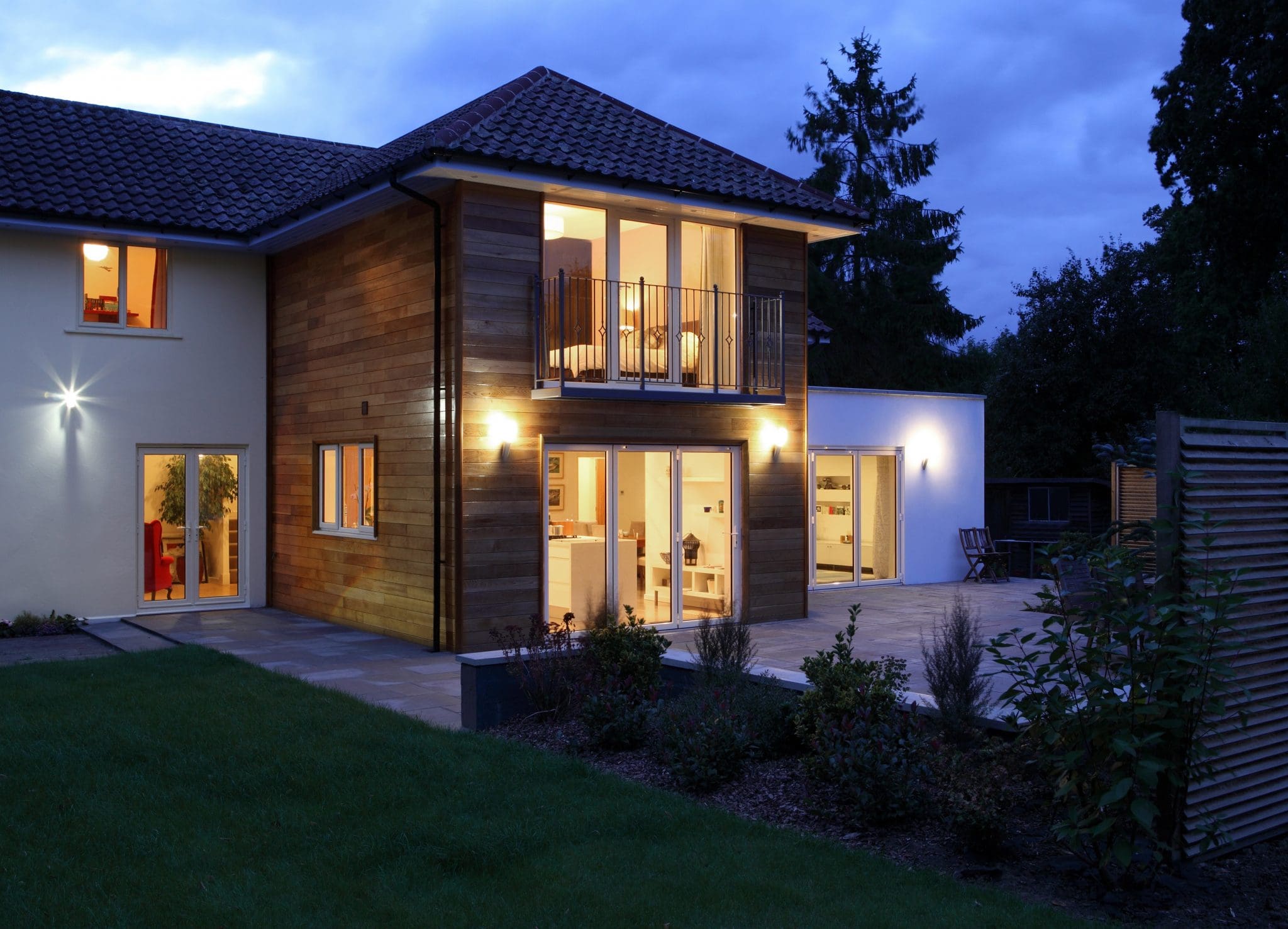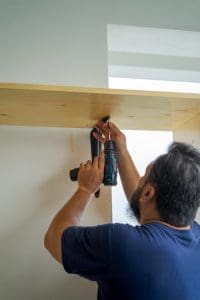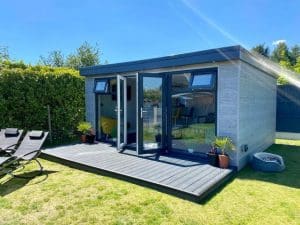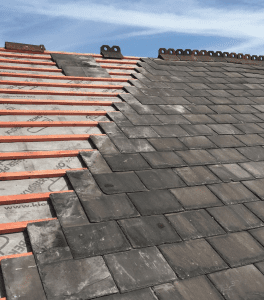In today’s world, living sustainably is more important than ever. Many of us are looking for ways to make more environmentally conscious choices, and the home is one of the best places to start. Whether you’re making changes to your existing space or adding a new home extension, sustainability should be at the forefront of your design considerations.
At 3D Construction, we believe that eco-friendly building practices not only benefit the environment but can also enhance the comfort and efficiency of your home. If you’re planning a home extension and want to make it as sustainable as possible, here are ten effective ways to reduce your environmental impact while creating the space you’ve always wanted.
1. Prioritise High-Quality Insulation
One of the most important factors in building a sustainable home extension is insulation. A well-insulated space reduces the amount of energy required to heat or cool your home, thus lowering your carbon footprint. Make sure that walls, floors, and roofs are insulated to the highest standards.
By using insulation materials such as recycled wool or cellulose, you can further improve the sustainability of your home. This not only helps you save energy, but it also makes your extension more comfortable and energy-efficient in the long term. A well-insulated extension will reduce your reliance on heating systems during the winter and cooling systems in the summer.
2. Use Recycled and Reclaimed Materials
Reusing materials wherever possible is a great way to minimise the environmental impact of your extension. During construction, you may come across materials such as bricks, timber, or tiles that can be repurposed for your new space. Using reclaimed wood, for example, adds a rustic charm to your extension while reducing the demand for newly harvested timber.
Recycling materials not only helps reduce waste, but it can also lower the cost of your project. Repurposing existing materials from other areas of your home or sourcing them from sustainable suppliers contributes to an eco-friendly extension without compromising on design or durability.
3. Incorporate Natural Light with Smart Design
Maximising natural light is an excellent way to reduce the energy consumption of your home. By designing your extension to allow ample sunlight into the space, you can limit the need for artificial lighting during the day. Skylights, bi-fold doors, and large windows are fantastic ways to flood your extension with natural light.
A well-lit space doesn’t just reduce your reliance on electrical lighting but can also create a more pleasant and airy atmosphere. When choosing windows, look for double or triple glazing to maintain energy efficiency by preventing heat loss.
4. Choose Energy-Efficient Appliances and Systems
If your home extension includes a kitchen or utility space, it’s important to select energy-efficient appliances. Modern appliances are much more energy-efficient than their older counterparts, consuming less electricity or water while delivering high performance.
When shopping for appliances, check their energy ratings and opt for models that use minimal resources. Whether it’s a fridge, dishwasher, or heating system, choosing eco-friendly appliances will reduce your energy bills and the environmental impact of your home.
5. Opt for Renewable Energy Solutions
Integrating renewable energy into your home extension is another excellent way to make it more sustainable. Solar panels, for instance, can help generate electricity or heat water, reducing your reliance on non-renewable energy sources.
Even if your budget doesn’t allow for a full solar energy system, you can still invest in smaller renewable energy solutions, such as solar water heaters or energy-efficient heat pumps. Over time, these systems will help you cut down on your energy consumption and costs.
6. Install Water-Efficient Fixtures
Water conservation is another critical aspect of sustainability. When designing your home extension, consider installing water-efficient fixtures such as low-flow taps, dual-flush toilets, and eco-friendly showerheads. These features help reduce water consumption without sacrificing functionality.
Additionally, you can explore options like rainwater harvesting systems, which collect and store rainwater for non-potable uses such as flushing toilets, watering plants, or washing outdoor areas. This further reduces your reliance on the main water supply and contributes to a more sustainable household.
7. Use Sustainable Building Materials
Choosing sustainable building materials is essential when planning a green extension. Look for materials that have low environmental impact and are sourced responsibly. For instance, timber certified by the Forest Stewardship Council (FSC) ensures that the wood comes from sustainably managed forests.
Other sustainable materials include bamboo, which grows quickly and is highly renewable, and recycled metal or stone. By opting for eco-friendly building materials, you reduce the demand for non-renewable resources and contribute to a healthier planet.
8. Incorporate Green Roofing and Walls
If you want to go the extra mile in making your home extension sustainable, consider adding a green roof or living wall to the design. A green roof is essentially a layer of vegetation planted on top of your roof, which provides natural insulation and improves air quality by absorbing carbon dioxide.
Similarly, living walls are vertical gardens that not only enhance the aesthetic appeal of your home but also promote biodiversity and help cool the surrounding environment. Both green roofs and walls are excellent solutions for reducing the carbon footprint of your extension while contributing to the ecosystem.
9. Consider Passive Solar Design
Passive solar design refers to a set of architectural principles that take advantage of the sun’s energy to heat your home naturally. By positioning windows and walls strategically, you can capture and store solar energy to keep your home warm in the winter and cool in the summer.
For example, placing large south-facing windows allows sunlight to penetrate deeply into your home during colder months. In the summer, shading devices such as overhangs or blinds can prevent overheating. Passive solar design is a cost-effective way to reduce energy consumption and maintain a comfortable temperature year-round.
10. Minimise Waste During Construction
Finally, to ensure that your home extension is truly sustainable, it’s essential to manage waste carefully during the construction process. Work with builders who prioritise waste reduction and recycling. Proper planning can help avoid over-ordering materials, while separating recyclable waste such as metal, wood, and plastic ensures that less ends up in landfills.
Encourage your contractors to reuse materials where possible and ensure that any surplus materials are donated or repurposed instead of being discarded. Sustainable construction practices go a long way in reducing the environmental impact of your home extension project.
Conclusion: Building a Sustainable Future with 3D Construction
Designing a sustainable home extension is about making mindful choices that benefit both the environment and your household. From insulation and natural light to renewable energy and water efficiency, every decision you make can contribute to reducing your carbon footprint.
At 3D Construction, we are committed to helping homeowners create eco-friendly spaces that align with their values. If you’re planning a home extension and want to incorporate sustainable building practices, contact us today at 07432 342462 or email us at info@3dhomeconstruction.co.uk. Let’s work together to create a home that is both beautiful and kind to the planet.




